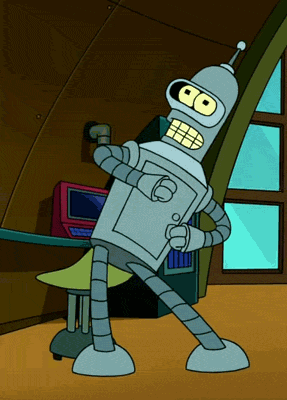Detecting stranger through CCTV camera and alerting the owner
Presenting by Madhan Kumar Selvaraj
In this blog, we are going to see some interesting stuff related to detection. Globally there are around 25 million CCTV cameras in the house. Sadly, for every 3 minutes robbery, theft and burglary are happening.Real-world issue
Even though we have access to live streaming CCTV video footage through the internet. But most of the time we failed to check the video footage at the time of the robbery. So, there is a need for a smart alert system.One-liner of the project
Detecting the human subject other than the family members through the CCTV footage and alerting the house owner through the mail.Technologies used here
- OpenCV computer vision
- Facenet CNN model
- MTCNN (Multi-task Cascaded Convolutional Neural Networks)
- Support Vector Machine algorithm
- Matplotlib library
The workflow of the project
- Focusing only on the human subject in the CCTV footage other than animals, birds, etc
- Take a screenshot of the video once we detect eyes, nose, and mouth of the person
- Extract the face of each person from the screenshot image
- Train the images of family members using an algorithm
- Compare the images of a detected person to the family members
- Strangers separated from the family members
- Details of the stranger mailed to the house owner
Classifying humans
Before knowing the technique of detecting the human, we should understand how machine process the image by using deep learning (Artificial Intelligence) from my previous blog. Here we are not going to train the images that we did previously, but we are going to use the HOGDescriptor() from the OpenCV library.We are going to do the project in Google's colab and you don't need to install anything here because of everything already available here and check this youtube video to get familiar with it.
I added the complete code later part of this blog and I am going to add only important coding part of this project. Because many people are not liking the coding kinds of stuff. So, download the complete code and play with it.
OpenCV is a powerful python's library for image processing and I took youtube warm-up video to detect the human subject by using the HOGDescriptor() architecture.
Note - I uploaded the video in my Google's drive under the path '/content/drive/My Drive/ColoabDataset/Video/dancetrim.mp4'.
import cv2
import imutils
from google.colab.patches import cv2_imshow
# Initializing the HOG person detector
hog = cv2.HOGDescriptor()
hog.setSVMDetector(cv2.HOGDescriptor_getDefaultPeopleDetector())
cap = cv2.VideoCapture('/content/drive/My Drive/ColoabDataset/Video/dancetrim.mp4')
while cap.isOpened():
# Reading the video stream
ret, image = cap.read()
if ret:
image = imutils.resize(image,width=min(400, image.shape[1]))
# Detecting all the person in the video
# image – Source image. See gpu::HOGDescriptor::detect() for type limitations.
# win_stride – Window stride. It must be a multiple of block stride.
# padding – Mock parameter to keep the CPU interface compatibility. It must be (0,0).
# scale – Coefficient of the detection window increase.
(regions, _) = hog.detectMultiScale(image, winStride=(4, 4), padding=(4, 4), scale=1.05)
# Drawing the regions in the Image
for (x, y, w, h) in regions:
# cv2.rectangle(image, start_point, end_point, color, thickness)
cv2.rectangle(image, (x, y), (x + w, y + h), (0, 0, 255), 2)
# Showing the output Image
cv2_imshow( image)
if cv2.waitKey(25) & 0xFF == ord('q'):
break
else:
break
cap.release()
cv2.destroyAllWindows()
By using the above script, we can able to detect the humans by pointing out them by the rectangular box. The output of the script populated by using GIF image.The screenshot is taken when we recognize the human in the video and the file will be sent to our classification model to check whether the person is a family member or not. This code is added to Github and I am not going to mention here.
Face detection
Instead of using the sample photos, I am going to use my own photo and the photo contains many trees and most of the person in the image wore a cooling glass. This will make some challenges while detecting eyes and their face.I am using the model MTCNN (Multi-task Cascaded Convolutional Neural Networks) which was trained by millions of human images to predict the human face, particularly eyes, nose, mouth. Also, I am pointing out by means of box and dots.
# face detection with mtcnn on a photograph # draw an image with detected objects def draw_image_with_boxes(filename, result_list): # load the image data = pyplot.imread(filename) # plot the image pyplot.imshow(data) # get the context for drawing boxes ax = pyplot.gca() # plot each box for result in result_list: # get coordinates x, y, width, height = result['box'] # create the shape rect = Rectangle((x, y), width, height, fill=False, color='red') # draw the box ax.add_patch(rect) # draw the dots for key, value in result['keypoints'].items(): # create and draw dot dot = Circle(value, radius=2, color='red') ax.add_patch(dot) # show the plot pyplot.show() filename = '/content/drive/My Drive/ColoabDataset/image/frndgang.jpg' # load image from file pixels = pyplot.imread(filename) # create the detector, using default weights detector = MTCNN() # detect faces in the image faces = detector.detect_faces(pixels) # display faces on the original image draw_image_with_boxes(filename, faces)It predicts the face by pointing out by square box and predicts the eyes, nose, mouth by means of red color dots.
Extracting the detected photos
Now we are going to extract the faces detected by our model and saving it in the drive folder. Later we'll use it to predict the person by using the Support Vector Machine algorithm.Create a folder in the google drive by following the below structure and upload the photos in the respective folder. Detected images from the screenshot can be saved in any sub-folders of the "val" folder and it is used for the testing purpose.
StrangerDetection (folder name)
|__data (folder name)
|_train (folder name)
| |_madhan (folder name)
| | |_madhanphoto1.jpg
| | |_madhanphoto2.jpg
| |
| |_kishore (folder name)
| |_kishorephoto1.jpg
| |_kishorephoto2.jpg
|_val (folder name)
|_madhan (folder name)
| |_madhanphoto1.jpg
| |_madhanphoto2.jpg
|
|_kishore (folder name)
|_kishorephoto1.jpg
|_kishorephoto2.jpg
# extract and plot each detected face in a photograph
# draw each face separately
def draw_faces(filename, result_list):
# load the image
data = pyplot.imread(filename)
# plot each face as a subplot
for i in range(len(result_list)):
# get coordinates
x1, y1, width, height = result_list[i]['box']
x2, y2 = x1 + width, y1 + height
# define subplot
pyplot.subplot(1, len(result_list), i+1)
pyplot.axis('off')
# plot face
# cv2.imwrite('/content/drive/My Drive/ColoabDataset/StrangerDetection/data/val/%s.jpg'%(i), data[y1:y2, x1:x2])
# pyplot.imsave('/content/drive/My Drive/ColoabDataset/StrangerDetection/data/val/%s.jpg'%(i), data[y1:y2, x1:x2])
pyplot.imshow(data[y1:y2, x1:x2])
# show the plot
pyplot.show()
# filename = '/content/drive/My Drive/ColoabDataset/image/uday.jpg'
filename = '/content/drive/My Drive/ColoabDataset/image/frndgang.jpg'
# load image from file
pixels = pyplot.imread(filename)
# create the detector, using default weights
detector = MTCNN()
# detect faces in the image
faces = detector.detect_faces(pixels)
# display faces on the original image
draw_faces(filename, faces)
You can see here that, our model extracted all the human faces from the image and it works best compared to other models in the market. Train the images of family members
I assume myself (Madhan) and one my friend (Kishore) as a family member and remaining all others as strangers. So, I trained a dozen images of myself and Kishore. Check the previous blog for training the image. Instead of training images like that method, I am using the face embedding technique Facenet developed by Google by using millions of images. The 'Face Embedding' model analyzes images and returns numerical vectors that represent each detected face in the image in a 1024-dimensional space.Later I am using the Support Vector Machine (SVM) algorithm to classify them.
# load faces
data = load('stranger-faces-dataset.npz')
testX_faces = data['arr_2']
# load face embeddings
data = load('stranger-faces-embeddings.npz')
trainX, trainy, testX, testy = data['arr_0'], data['arr_1'], data['arr_2'], data['arr_3']
# normalize input vectors
in_encoder = Normalizer(norm='l2')
trainX = in_encoder.transform(trainX)
testX = in_encoder.transform(testX)
# label encode targets
out_encoder = LabelEncoder()
out_encoder.fit(trainy)
trainy = out_encoder.transform(trainy)
testy = out_encoder.transform(testy)
# fit model
model = SVC(kernel='linear', probability=True)
model.fit(trainX, trainy)
# test model on a random example from the test dataset
# selection = choice([i for i in range(testX.shape[0])])
for selection in range(testX.shape[0]):
random_face_pixels = testX_faces[selection]
random_face_emb = testX[selection]
random_face_class = testy[selection]
random_face_name = out_encoder.inverse_transform([random_face_class])
# prediction for the face
samples = expand_dims(random_face_emb, axis=0)
yhat_class = model.predict(samples)
yhat_prob = model.predict_proba(samples)
# get name
class_index = yhat_class[0]
class_probability = yhat_prob[0,class_index] * 100
predict_names = out_encoder.inverse_transform(yhat_class)
if class_probability > 90:
title = '%s (%.3f)' % (predict_names[0], class_probability)
else:
title = 'Stranger (%.3f)' % (100-class_probability)
pyplot.imsave('/content/drive/My Drive/ColoabDataset/StrangerDetection/mail/stranger%s.jpg'%(selection), random_face_pixels)
plt.figure(figsize=(10, 10))
plt.subplot(1,10, selection+1)
plt.title(title)
plt.axis('off')
plt.imshow(random_face_pixels)
plt.show()
I gave the condition of above 90 percent as family members and the remaining persons as strangers. Because of the SVM model, we trained images only for two persons.Mailing the strangers image
I am using the Gmail to send the mail and there is an option of attaching multiple images and sending it to multiple recipients. Use your Email ID and password. Also, add the receiver Email ID.IST_time = pytz.timezone('Asia/Kolkata')
date_time = datetime.now(IST_time)
today_date = (str(date_time).split('.')[0]).split(' ')[0]
time_now = (str(date_time).split('.')[0]).split(' ')[1]
print(date_time)
#Set up crap for the attachments
files = "/content/drive/My Drive/ColoabDataset/StrangerDetection/mail"
filenames = [os.path.join(files, f) for f in os.listdir(files)]
number_of_person = len(filenames)
#Set up users for email
gmail_user = "your email ID"
gmail_pwd = "Email ID password"
recipients = ["Receiver email ID"]
# Record the MIME types of both parts - text/plain and text/html.
part1 = MIMEText(html, 'html')
#Create Module
def mail(to, subject, attach):
msg = MIMEMultipart()
msg['From'] = gmail_user
msg['To'] = ", ".join(recipients)
msg['Subject'] = subject
msg.attach(part1)
#get all the attachments
for file in filenames:
part = MIMEBase('application', 'octet-stream')
part.set_payload(open(file, 'rb').read())
encoders.encode_base64(part)
part.add_header('Content-Disposition', 'attachment; filename="%s"' % file)
msg.attach(part)
mailServer = smtplib.SMTP("smtp.gmail.com", 587)
mailServer.ehlo()
mailServer.starttls()
mailServer.ehlo()
mailServer.login(gmail_user, gmail_pwd)
mailServer.sendmail(gmail_user, to, msg.as_string())
# Should be mailServer.quit(), but that crashes...
mailServer.close()
#send it
mail(recipients,"Alert! someone enter into your house", filenames)
Reference
Coding part
Complete coding of this project is available in my Github repository and Colab.Finally, we learned the technique to detect the human movements from the video and extracting the human face from the image and did the image classification. You can use this project as a sample model and improve this model as per your wish.
P.S - Around 85% of our problem comes because of worrying as mentioned in the book "How to stop worrying and start living by Dale Cargenie". Negativity is the root cause of most of our mental problems and it decreases self-confidence and leads to insecurity. Always stay busy and negativity hijacks our mind when we are alone. Stay happy and healthy. This too shall pass (இதுவும் கடந்து போகும்).









Good da
ReplyDelete